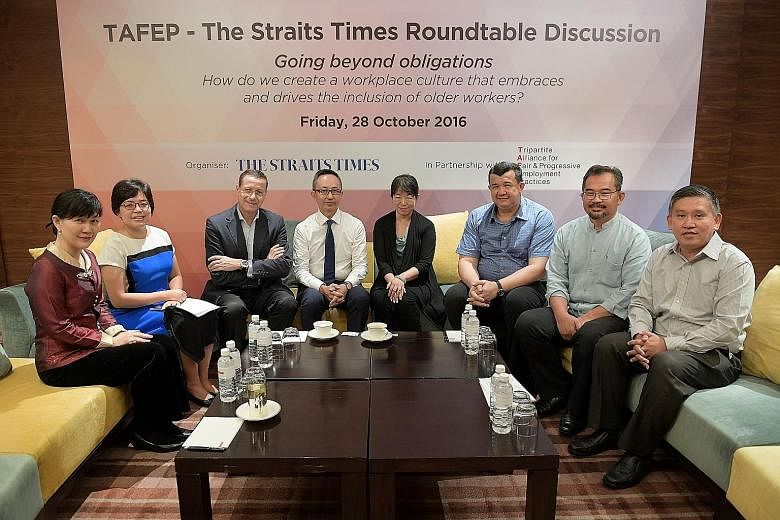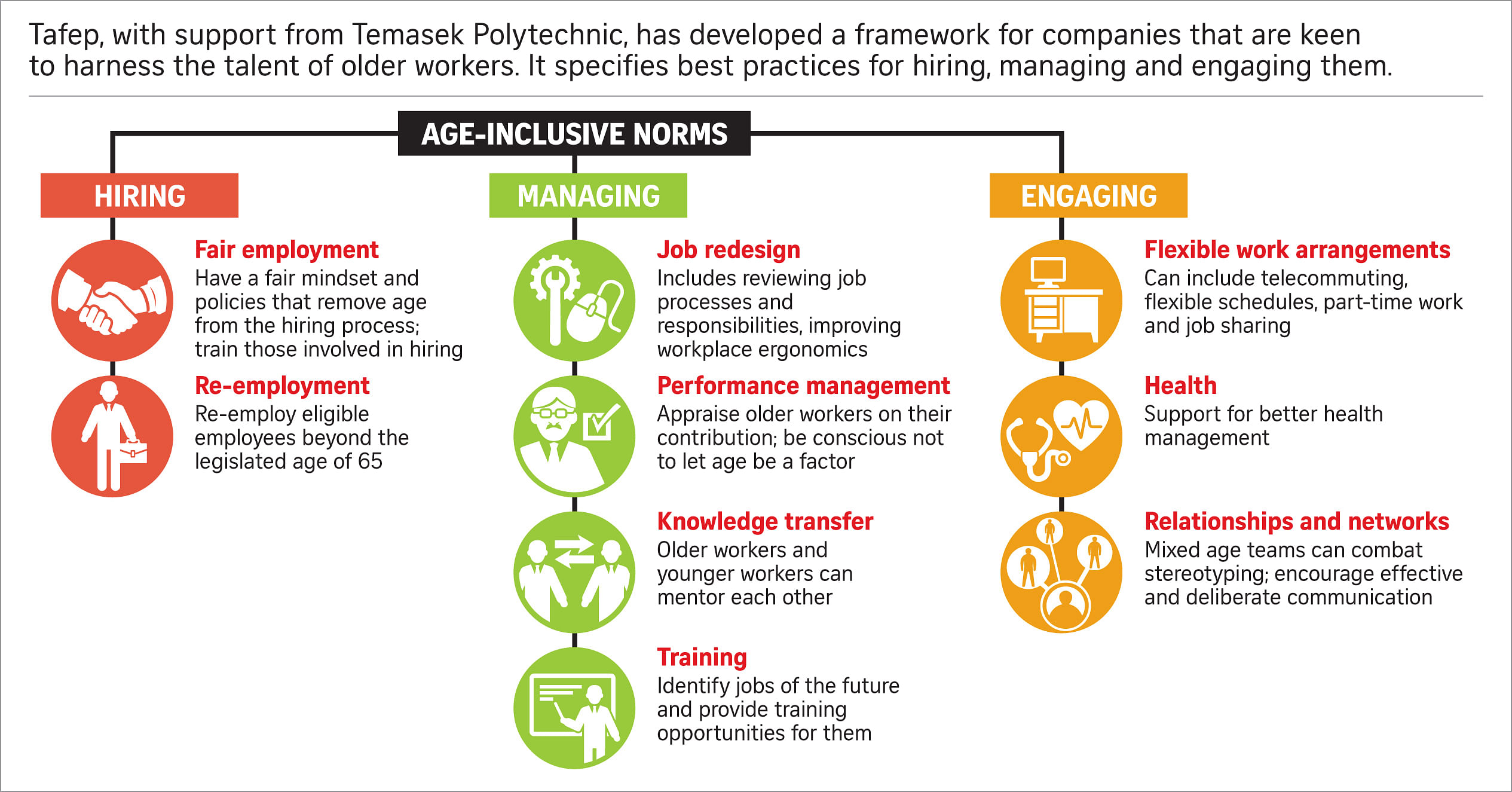COMPANY CULTURE
The cultural mindset of a company is set by its leaders, but it has to trickle down to the rank and file.
Hiring managers, especially, must have the right mindset and they must be aware that the chief executive supports them in bringing in older workers, said Mr Alexander Melchers, Tafep board member and vice-president of the Singapore National Employers Federation (SNEF).
-
ON THE PANEL
-
• Lee Su Shyan, The Straits Times business editor, panel moderator
• Toh Yong Chuan, The Straits Times manpower correspondent
• Alexander Melchers, Tafep board member and vice-president of the Singapore National Employers Federation
• Chang Li Er, office manager at digital marketing firm Design Prodigy
• Jason Ho, OCBC Bank's head of group human resources
• Helen Ko, executive director of training consultancy Beyond Age
• Zahidi Abdul Rahman, president of the Singapore Malay Chamber of Commerce and Industry
• James Tan, director of the National Trades Union Congress' U Live department for active older workers
"The hiring process takes place in departments, in product centres, in divisions and sub-companies, often following a certain company culture," he said.
The company head could specify that a particular position can and should be filled by an older person.
OCBC Bank's head of group human resources, Mr Jason Ho, said it is the employer's job to see the value in workers, train them and make them employable, and organisations must create a culture where every employee is valued regardless of age.
Employing older staff can also contribute to a more welcoming company culture, he added, noting that fresh graduates working in the bank have commented that the workplace is known to be friendly. He believes this is because older workers share their knowledge and experience with them.
"A lot of the workers at OCBC are obliged to teach you because it's part of the culture to share. Therefore, the mentoring process that we have within the organisation is important," said Mr Ho. "If we don't have experienced workers, we would never have this culture to actually teach the young ones."
QUESTION OF RUNWAY
One obstacle older workers face is the misconception that they have fewer years left to contribute to the company than younger workers, and this is often why it is so difficult for those "let go" in their 50s to find a new job, whether in the same industry or a different one.
Mr Melchers said this is where the issue of "runway" comes in.
Bosses feel comfortable employing people at the age of 40, even though they may leave at the age of 53. "You think, it's okay, 13 or 14 years, I can train him and put him on the job," he said.
In fact, they can get the same length of service from someone who joins the company in their 50s, he said. "Today, if you employ somebody at 55, he will work until 69 because 15 years from now, there may not be a retirement age any more. So it's the same number."
Mr James Tan, director of the U Live department for active older workers at the National Trades Union Congress (NTUC), said that in fact, investing in the development of older staff may actually be more beneficial to companies as these are the workers who tend to stay for many years.
"We tell (companies), if you look at the environment of pay and the churn of younger workers, they actually move from one place to another. So the runway of the younger workers may not be long; in fact, for older workers, the runway is long," he said. "Training our older workers actually makes business sense."
MINDING THE NITTY-GRITTY
Besides changing mindsets, physical changes to the workplace and work processes can help older employees feel more welcome.
Arranging the work space in a factory so that people can do their work comfortably, or ending the work day earlier so they can begin their journeys home earlier, could help, said Mr Zahidi Abdul Rahman, president of the Singapore Malay Chamber of Commerce and Industry.
He noted that when new technology and software are introduced in a company, they may need to be adapted to help the more senior staff using them. "Very simple things like making the numbers bigger, for example, will already help a lot of older folk in the working environment."
He also suggested that larger companies with established human resources departments share best practices with smaller firms.
Dr Helen Ko, executive director of training consultancy Beyond Age, said there is consistent evidence that older workers are willing to learn new skills, although some of them may lack confidence in tackling new kinds of work or even in passing training assessments.
Instead of using lots of pen and paper tests relying heavily on memory, training should be in bite- sized modules and conducted in such a way that it helps older people learn the content effectively, she said.
LIFELONG LEARNING AND CONFIDENCE
Older workers themselves need to be prepared to upgrade themselves by, for example, picking up technology-related skills.
Ms Chang Li Er, a 56-year-old office manager at digital marketing firm Design Prodigy, said: "The workplace is changing, and there are things that we need to relearn and to refresh. Like, the laws have been revised a few times, so if we depend on our past body of knowledge, definitely we are outdated."
Dr Ko said that older professionals, managers, executives and technicians trying to prepare for future jobs should not only build depth but also breadth - less specialised skills that are transferable to related industries.
She added that they can leverage on their networks to land jobs.
"For those who are successful in re-entering the work market, it is not through applications, through writing e-mails, or sending many resumes or letters - it is by word of mouth, it's through your social contacts and even through your voluntary work," she said.
Straits Times manpower correspondent Toh Yong Chuan said that at the same time, older people should be coached on how to market their skills well. One thing they have going for them, especially in the slow economy, is that they are resilient, he noted.
Instead of providing incentives just for employers to hire older workers, he said that "I wish that more effort and resources are put into helping workers themselves, to help them see their value and to help them pitch what they have to prospective employers".
This feature is brought to you by Tafep.


